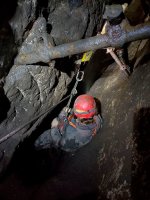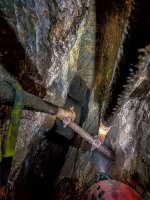Pitlamp
Well-known member
We've discussed the pros & cons of steel and ally scaff tubes on here (with the emphasis on longevity) before but I have a question about their relative strength.
If you had two identical length scaffold tubes, one steel and one ally, supported horizontally an equal distance apart at each end - then you applied a downwards increasing force in the centre of each tube - which would start to bend first?
Can anyone advise please?
If you had two identical length scaffold tubes, one steel and one ally, supported horizontally an equal distance apart at each end - then you applied a downwards increasing force in the centre of each tube - which would start to bend first?
Can anyone advise please?





